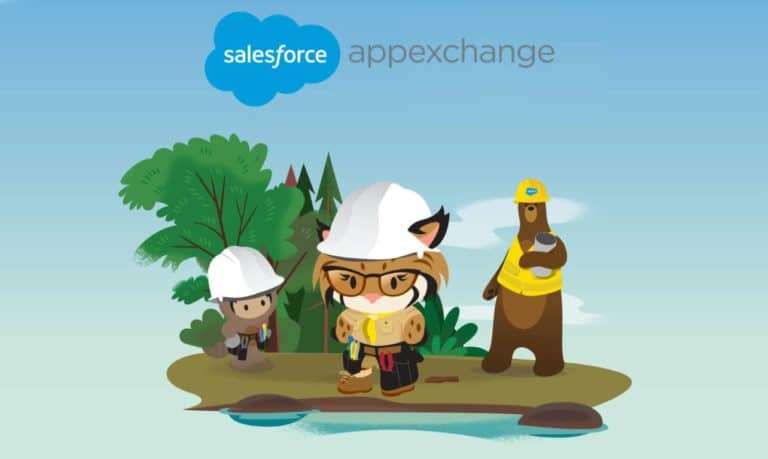Salesforce has big plans with its ISV (Independent Software Vendors) partners. The company wants to play a much larger role in the choice for strategic IT solutions of its customers. The aim is that customers no longer look at Gartner’s reports or read Techzine to learn about great solutions, but consult the Salesforce AppExchange and its ISV partners instead.
The number of Salesforce applications has now passed the 5,000 mark. That’s a good time to talk to Salesforce about its ambitions with the AppExchange and all ISV partners that offer solutions on the platform. We spoke with Baman Motivala, ISV Vice President in EMEA and APAC at Salesforce.
For ISV partners in Europe and Asia, Motivala is one of the most important people at Salesforce. He has clear ambitions that will appeal to many ISV partners, but certainly not all of them. Motivala believes that AppExchange has had a good start, but the platform still has a lot of untapped potential. Motivala wants to make changes to make the AppExchange more prominent. Additionally, he wants the AppExchange to become much more important for customers and ultimately attract more large partners.
Related: Developers can build apps for free on the Salesforce platform
The main focus is not to increase the number of applications in AppExchange. Motivala believes that the total number of applications is less relevant than their quality and the number of applications that actually make a difference with crucial IT solutions for Salesforce customers. Motivala aspires a position for Salesforce AppExchange where customers make strategic IT choices by consulting the AppExchange at an early stage to see how ISV partners can help with their challenges. Those customers would otherwise download a Gartner report.
How can ISV partners help with crucial strategic IT solutions?
We wondered how he imagines achieving this. Salesforce is basically a CRM solution with several major expansions, including Sales, Service, Marketing and Commerce. He says that Salesforce has created a beautiful platform, which excels in several areas. For about a year now, Salesforce has also been able to use Customer 360 to centralise all the data allowing for more insight into certain processes and customer data originating from the various Salesforce solutions.
Motivala thinks this is a good start, but companies have many more crucial applications and valuable data. Think of a large solution like ERP, but also of smaller specialist services for signing documents and contracts. These play a crucial role in the IT landscape and all contain valuable data.
The advantages of the AppExchange
Motivala argues that there’s a big advantage to be gained for Salesforce customers if they look at the available partners in the Salesforce AppExchange for critical IT solutions, rather than opting for a stand-alone solution. Salesforce partners have spent a lot of time integrating their IT solution with the Salesforce platform, making data sharing child’s play and delivering immediate benefits through analytics and AI applications. Also, some partners already provide advanced integration with Customer 360, allowing everything to be controlled from a single interface. This offers an enormous efficiency advantage.
Of course, external solutions can integrate with the Salesforce APIs, enabling data exchanges and applications to work together. MuleSoft plays a major role in this. Motivala states that this is extremely important because Salesforce wants to collaborate well with all players in the market. However, there are more benefits when an application is built on the Salesforce platform, or when the supplier of a solution has built an application layer between Salesforce and its own solution.
In the end, support for the Salesforce data model or deep integration with it is the best way to all of Salesforce’s analytics and AI solutions. Especially after the acquisition of Tableau, expectations in this area are high. The integration within Customer 360, for example, is also extremely valuable, because it allows for integration with the various applications. As a result, employees no longer have to switch between applications.
How will Salesforce convince customers to work with ISV partners more?
Ultimately, customers will have to be made aware of the value of the ISV partners and the presence of the AppExchange. Salesforce still has some work cut out because not all customers are actively working and using the AppExchange yet. Companies now often choose for well-known suppliers that are often written about or mentioned in analyst reports. Google’s search engine undoubtedly also plays a major role.
Motivala says that Salesforce is currently working on plans to mitigate this. He would like to see a report or brochure for each industry and region be made available, presenting several ISV partners that can speed up a customer’s digital innovation journey. Salesforce has an enormous number of customers and use cases available from which lessons can be learned. If, as a retail customer, you are shown five or six solutions that can improve, optimise, and grow your entire digital strategy, then that’s hugely valuable. The total investment costs can then be determined fairly quickly so that the entrepreneur knows what the investment will be and can also assess the benefits and return on investment it will bring.
The first step in this direction is these recently launched industry booklets that provide an overview of AppExchange apps and associated use cases for customers in EMEA by industry.
Salesforce is sharing more and more information about the gems in the AppExchange that might get overlooked due to the sheer volume of applications. As mentioned earlier, there are more than 5,000 applications, from very large to smaller solutions. By picking the best and presenting them by sector and region, the growth of ISV partners should accelerate and the Salesforce platform should play a more central role.
Salesforce is going to pay more attention to the platform and the partners. We are curious to see what this will yield in the coming years.
Tip: Salesforce lets users add functionality through low-code
